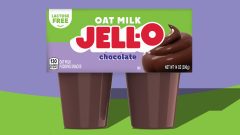New Study Challenges The Gluten-Free Trend—Is It Just Hype?

Countless food trends have existed over the years. From the classic “milk does a body good” campaign to the Atkins diet, ketogenic, Whole30, and more. Some still attract faithful followers and others have been replaced by newer food fads. Gluten-free, for example, has only been popular for two decades. A 1952 study, however, shows that the concept existed long before gluten-free products lined grocery store shelves. Even then, scientists were aware of celiac disease, an autoimmune disease that affects 1 in 100 people susceptible to intestinal damage when they consume gluten.
The trend itself took off around the 2010s, partly due to the science community’s growing interest in peanut and tree nut allergies, which tripled in the US from 1997 to 2008, per Food Allergy. Between 2011 to 2015, gluten-free went from being relatively unknown by the average person to the hottest celebrity fad diet. Today, gluten-free products are nearly as common as organic ones, often costing more. Celiacs and non-celiacs alike contributed to a 7.7 billion market value in 2024. But, what if gluten-free wasn’t the healthier alternative it’s been purported as?
A new study conducted by Sachin Rustgi of Clemson University, published in the journal Plant Foods for Human Nutrition, challenges the notion that gluten-free products are healthier, positing that they typically offer less protein and contain more sugar and calories than alternatives with gluten. It compared gluten-free products with gluten-containing ones and found the marketing misleading, exaggerating supposed benefits like weight control and diabetes management, to name a few.
He listed several reasons for this: Lack of dietary fiber, protein, and essential nutrients; supplements used to compensate for nutritional imbalances; and inconsistencies across different manufacturers and regions. According to Rustgi, there is more sugar in gluten-free products, and to address deficiencies, manufacturers add supplements that gluten-containing products naturally contain. Furthermore, increased body mass index (BMI) and nutritional deficiency have been linked to people who follow gluten-free diets over long periods.
In the U.S., gluten-free products are defined as containing less than or equal to 20 parts per million of gluten and generally lack the arabinoxylan found in wheat, rye, barley, and oats, which is an important nonstarch polysaccharide that benefits gut health, digestion, and blood sugar regulation. The study also cites the challenge of locating gluten-free products that are nutritionally balanced. Some gluten-free seeded breads do provide significantly more fiber than gluten-containing counterparts, but as mentioned, it varies widely from manufacture to manufacture.
Rustgi’s study acknowledges the importance of gluten-free products for those with celiac disease and/or wheat allergies. Its purpose is to challenge the proposed health benefits for people who adopt the lifestyle simply because it’s marketed as being better for you. Currently, gluten-free products are consumed by approximately 25% of the U.S. population. A stark contrast to the 6% of people with wheat allergies and 1% of those with celiac disease, suggesting that most gluten-free consumption has little to do with health.
If you’re interested in learning more about the study, head to Clemson News.






















